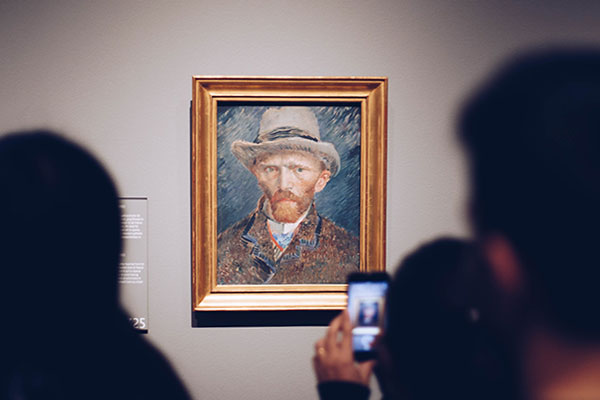🌟 Chapter : The Vedic Period 🌟
🌿 The Vedic Age: A Transition into the Vedic World 🌿
The Vedic period in Indian history, spanning approximately from 1500 BCE to 600 BCE, marks a transformative era following the collapse of the Indus Valley Civilization. This period is closely associated with the migration of the Indo-Aryans into the Indian subcontinent and the subsequent emergence of the Vedic civilization, a society deeply connected to religious and cultural evolution. The sacred texts, the Vedas, form the foundation of Hinduism and provide invaluable insights into the life, philosophy, and beliefs of this era.
📜 The Vedas: The Foundation of Vedic Knowledge 📜
- The Four Vedas: The Vedic texts are the earliest religious scriptures of India and consist of four major texts:
- Rigveda: The oldest and most significant of all Vedas, consisting of hymns dedicated to various deities, especially Agni (the fire god), Indra (the king of gods), and Varuna (the god of cosmic order).
- Yajurveda: Focuses on rituals and sacrifices, providing guidance on how to perform them.
- Samaveda: A collection of melodies and chants to be sung during religious rituals, emphasizing music and sound.
- Atharvaveda: Contains hymns, magic spells, and incantations, focusing more on health and daily life.
🏞️ The Life and Society of Vedic India 🏞️
- Early Vedic Society (1500 BCE – 1000 BCE):
- The society during the early Vedic period was largely pastoral and tribal, with people primarily engaged in cattle herding.
- The economy was based on the pursuit of cattle (especially cows), and cattle became a key symbol of wealth.
- Society was organized into tribes (Janas), and leadership was vested in chiefs (Rajas) who governed based on tribal customs.
- The concept of Dharma (righteous living) began taking shape, and rituals performed by Brahmins (priests) played a central role in spiritual and community life.
- Later Vedic Society (1000 BCE – 600 BCE):
- As the Vedic society began to evolve, it moved from a pastoral economy to a more agrarian-based one. Settlements expanded, and agriculture took a prominent role in sustaining society.
- The Varna system, a precursor to the caste system, started to take shape, dividing society into four broad categories:
- Brahmins (priests and teachers)
- Kshatriyas (warriors and rulers)
- Vaishyas (merchants and farmers)
- Shudras (laborers and service providers)
- The transition to a more complex society led to the rise of cities and more rigid social structures.
🌼 Religious and Philosophical Beliefs in the Vedic Period 🌼
- Deities and Worship:
- Vedic religion revolved around the worship of nature deities, fire rituals, and sacrificial offerings. Gods like Indra (thunder god), Agni (fire god), and Varuna (god of cosmic order) were integral to their belief system.
- Sacrifices: The concept of Yajnas (sacrificial rites) played an essential role in maintaining harmony with nature and ensuring the prosperity of society. The performance of these elaborate rituals required precision and was considered a crucial element of dharma.
- Philosophical Concepts:
- The Vedic texts hint at profound philosophical ideas like Brahman (the universal soul) and Atman (individual soul). These ideas laid the foundation for later Upanishadic philosophy, which explored the nature of existence, the self, and the universe.
- The concept of Karma (action and its consequences) began to take root, influencing spiritual practices and ethical living.
- The Upanishads: The Upanishads, a collection of mystical and philosophical texts, were composed towards the end of the Vedic period. They discuss profound questions of life and death, the soul, and the ultimate reality (Brahman).
🌾 Social Structure and Economy of the Vedic People 🌾
- Family and Social Hierarchy:
- The family was the core unit of society, and marriages were usually arranged with an emphasis on dharma and rituals.
- Women had important roles in society, especially in the early Vedic period, where there were instances of female sages (like Gargi and Maitreyi), but their status began to decline by the later Vedic period.
- Society became more stratified, and the Varna system evolved into a rigid structure, with each group assigned specific duties.
- Economy and Agriculture:
- Agriculture was mainly dependent on the monsoon rains, and people cultivated barley, wheat, rice, and other crops.
- Trade: The Vedic people traded goods like ghee (clarified butter), ganga water, and grain, and the evidence suggests some level of commerce with neighboring regions.
🛕 The Vedic Rituals and Practices 🛕
- Yajnas (Sacrificial Rites):
- Yajnas were central to Vedic religion, performed by priests to appease the gods and seek their blessings. These rituals were highly elaborate and included offerings of grains, clarified butter, and animals into the sacrificial fire.
- The Ashvamedha Yajna (horse sacrifice) was one of the most important and elaborate rituals, often performed by kings to assert their sovereignty.
- Sacrificial Fire and Agni:
- The Agni (fire) was considered the messenger between the gods and humans, and the Vedic people believed that fire could purify and bring about prosperity.
- The Homa rituals involved offerings of ghee and other materials into the sacred fire.
🏛️ The Transition from Vedic to Post-Vedic Period 🏛️
- Rise of New Kingdoms:
- By the end of the Vedic period, small tribal communities began to evolve into kingdoms and republics, known as Mahajanapadas. This period marked a shift from tribal-based society to a more structured and powerful state system.
- The Upanishadic Shift:
- The Upanishads reflect the shift from external rituals to internal spirituality, focusing on the nature of the self, the soul, and the ultimate reality (Brahman). This philosophical evolution laid the groundwork for Buddhism and Jainism, which arose in the later period.
Key Takeaways 📚
- The Vedas: The Vedas form the core spiritual and philosophical texts of ancient India, offering insight into Vedic religion, rituals, and society.
- Social Structure: The Varna system laid the foundation for the caste system that would later shape Indian society.
- Religious Practices: The Yajnas and sacrificial rituals were vital to Vedic worship, focused on the worship of deities like Indra and Agni.
- Philosophical Foundations: The Upanishads explored profound ideas of Brahman, Atman, and Karma, influencing later religious and philosophical movements.
- Shift to Agrarian Society: The Vedic period saw the rise of agrarian economies and more rigid social structures, marking the evolution of Indian society.
Conclusion 🌱
The Vedic period is a monumental phase in Indian history, laying the foundations for religious, social, and philosophical systems that continue to influence India today. The transition from the early Vedic to later Vedic periods, with the growing complexity of society, economy, and beliefs, paved the way for the Mahajanapadas and the rise of major world religions like Buddhism and Jainism.


